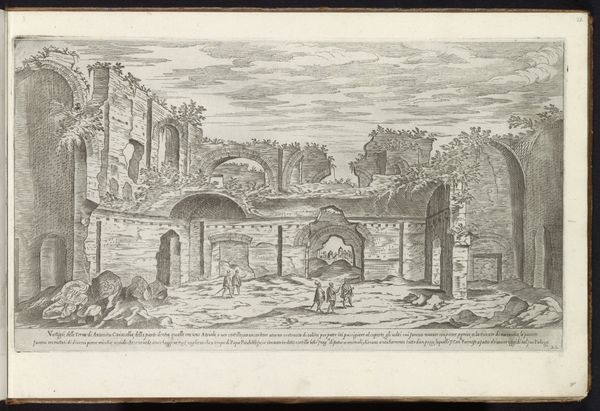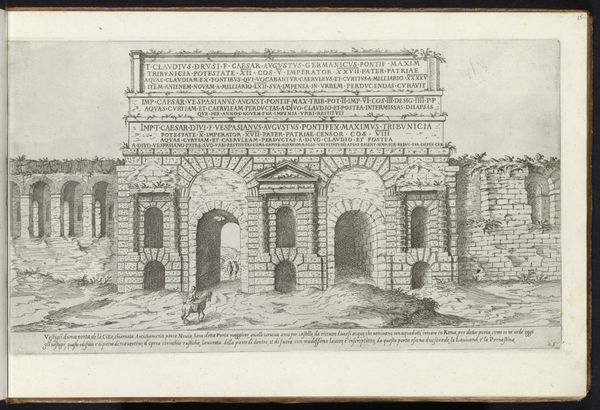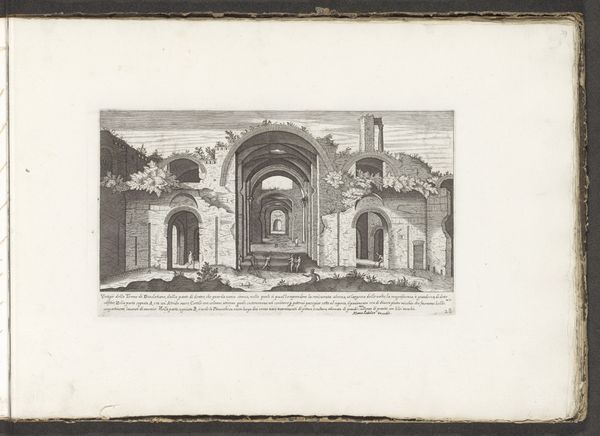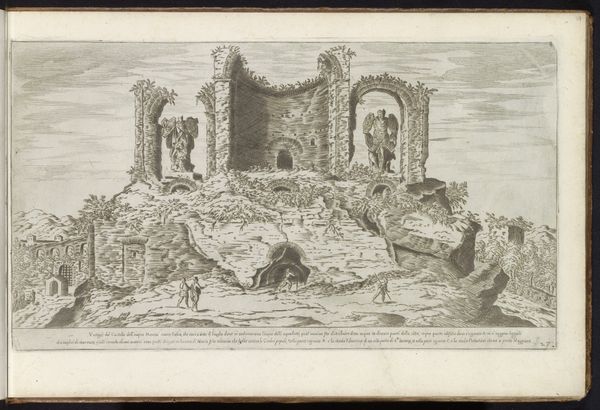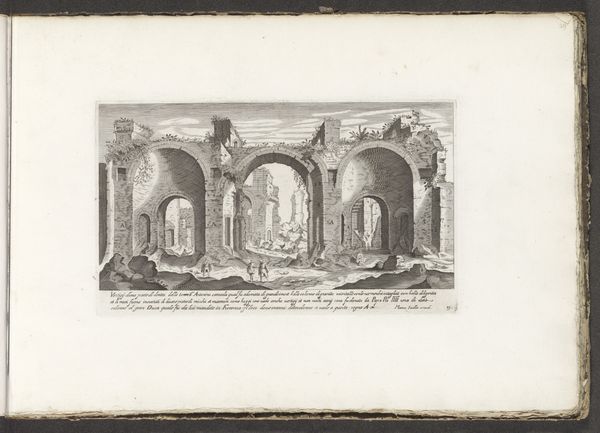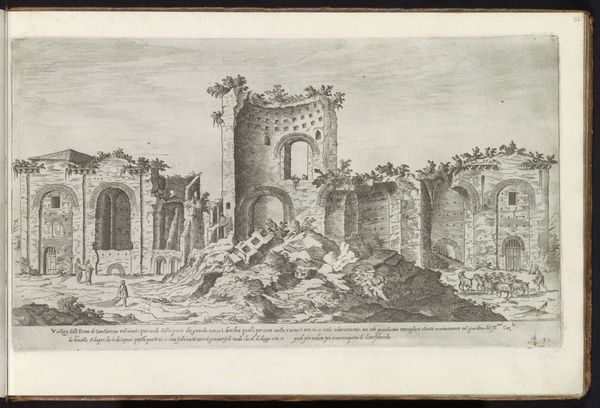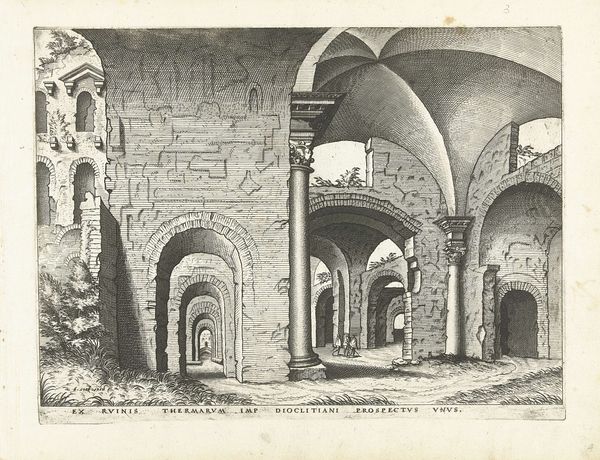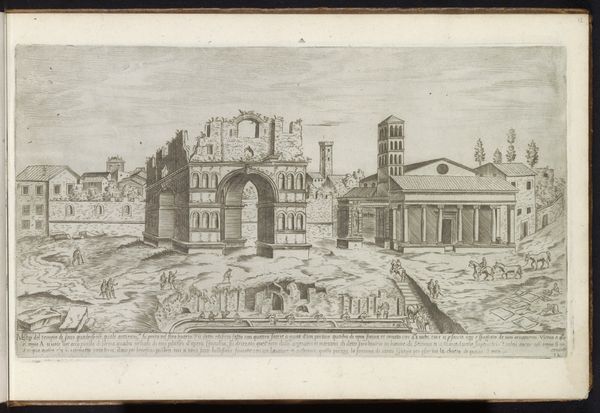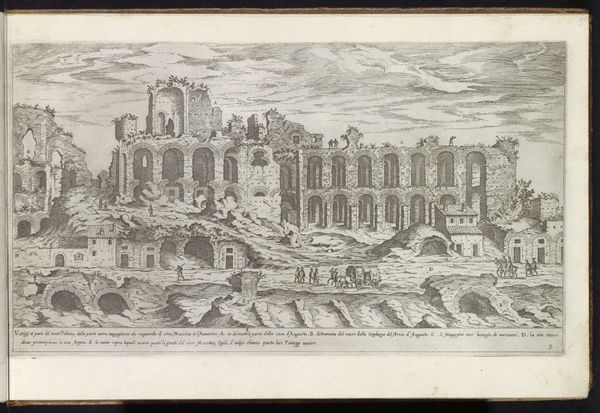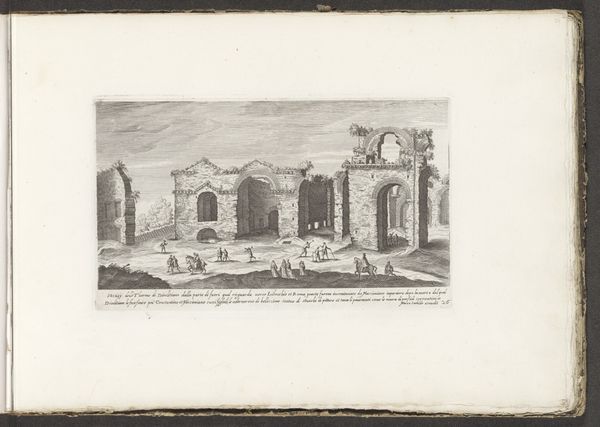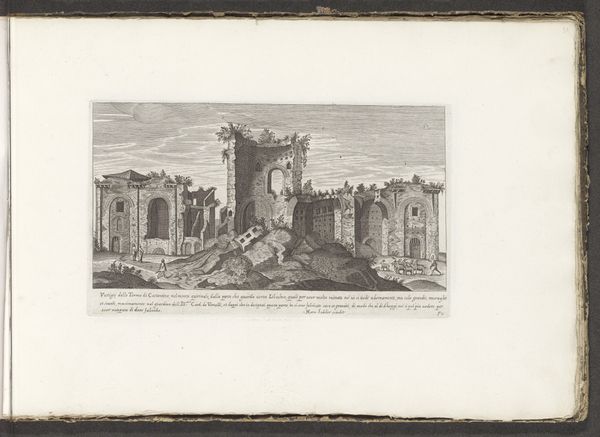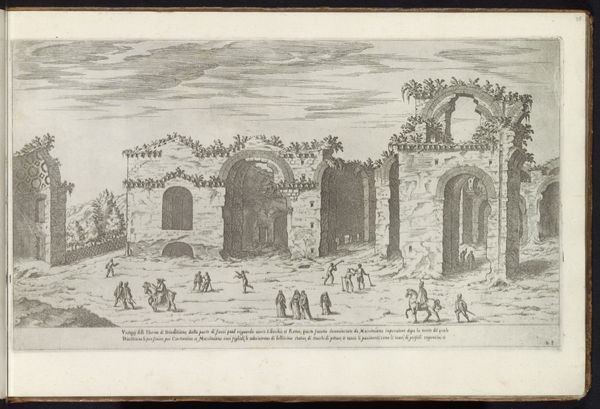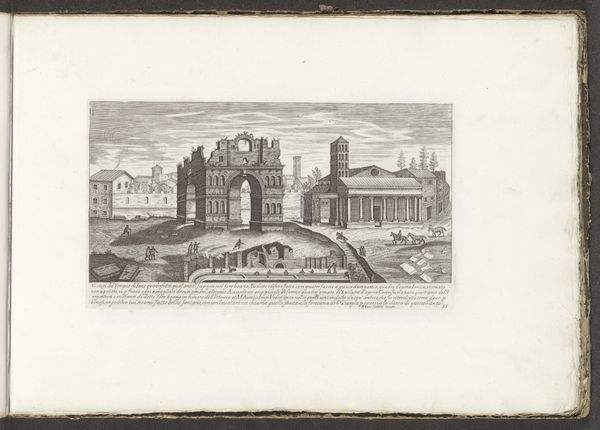
drawing, ink, engraving, architecture
#
drawing
#
ink drawing
#
pen drawing
#
mechanical pen drawing
#
pen illustration
#
pen sketch
#
landscape
#
personal sketchbook
#
ink
#
ink drawing experimentation
#
pen-ink sketch
#
pen work
#
sketchbook drawing
#
cityscape
#
italian-renaissance
#
engraving
#
architecture
Dimensions: height 215 mm, width 381 mm
Copyright: Rijks Museum: Open Domain
Editor: Here we have "Thermen van Diocletianus te Rome," or Baths of Diocletian in Rome, a cityscape rendered around 1575 by Étienne Dupérac, using ink and engraving techniques. I'm struck by how the ruins are presented, both grand and decaying at the same time. It has an interesting interplay between nature reclaiming architecture and the organized lives of these small figures. What historical context is most important when we consider this particular image? Curator: Well, this print speaks volumes about the shifting perceptions of classical antiquity during the Renaissance. Dupérac’s work appeared when the ruins of Rome were both a source of pride and a reminder of a lost empire. We should look closely at how the architectural forms are meticulously documented. Is this accuracy merely archaeological? Or does Dupérac frame a specific attitude toward these ruins, for the public who viewed his work? Editor: So, it’s more than just showing what’s there, but perhaps making a statement? I notice that the people seem quite small compared to the grand scale of the Baths. Curator: Precisely. This contrast served a political purpose. Images like these were consumed across Europe. Consider how the power of Rome was perceived by different audiences – say, in France, versus in the fragmented Italian states. How would viewers have related to these monumental structures in a society where religious conflict played such an enormous role? Dupérac’s etching doesn’t simply show a ruin. Editor: That gives me a lot to think about. The image becomes an active participant in Renaissance politics, reminding viewers of both the grandeur and the fallibility of empires. I had considered it an isolated image, not something interacting with sociopolitical forces! Curator: Exactly! Images always operate within very specific political and ideological environments. Always ask: for whom was this created, and what impact was it designed to achieve?
Comments
No comments
Be the first to comment and join the conversation on the ultimate creative platform.
